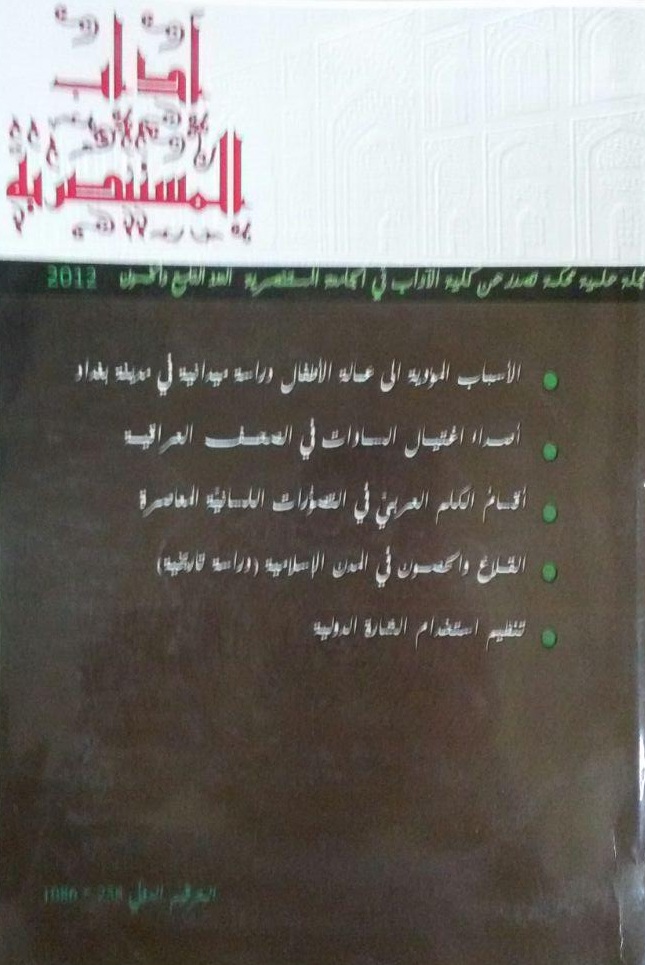Abstract
The study examines the translation of military neologism to see how to
deal with them. It highlights the translation problems caused by linguistic
differences.
It also categorizes these neologisms according to the standpoint of their
formation and the criteria of use and of translational occurrences in
English. By evaluating the correctness and the effectiveness of the
neological translations. It attempts to provide some appropriate renditions
for some military neologisms .the study is conducted with categories by
including strategies such as translation through near equivalent,
Explanation, Loan translation and standard / recognized translation as
primary research method to obtain data which are then complemented by
means of textual analyses of the terms. The findings of the analysis of
neologisms to translators are to have the background information about
the subject matter of military neologisms to help them understand the
concepts embodied there in, and so render the messages properly.
Achieving a translational equivalent of a military neologism without
considering its contextual use is not an easy task. The dictionary is not the
only source to resort to in dealing with the meanings of such neologisms
of military expressions. Some additions are needed to compensate the
missing information in the translations so that the original can be
retained
deal with them. It highlights the translation problems caused by linguistic
differences.
It also categorizes these neologisms according to the standpoint of their
formation and the criteria of use and of translational occurrences in
English. By evaluating the correctness and the effectiveness of the
neological translations. It attempts to provide some appropriate renditions
for some military neologisms .the study is conducted with categories by
including strategies such as translation through near equivalent,
Explanation, Loan translation and standard / recognized translation as
primary research method to obtain data which are then complemented by
means of textual analyses of the terms. The findings of the analysis of
neologisms to translators are to have the background information about
the subject matter of military neologisms to help them understand the
concepts embodied there in, and so render the messages properly.
Achieving a translational equivalent of a military neologism without
considering its contextual use is not an easy task. The dictionary is not the
only source to resort to in dealing with the meanings of such neologisms
of military expressions. Some additions are needed to compensate the
missing information in the translations so that the original can be
retained
Abstract
الخلاصةتتناول هذه الدراسة ترجمة المصطلحات العسكرية الحديثة لمعرفة كيفية التعامل معهم و تسلط الدراسة الضوء على مشاكل الترجمة الناتجة عن الاختلافات اللغوية. وتصنف الدراسة المصطلحات العسكرية الحديثة تبعا لوجهة النظر الخاصة بتشكيلها ومعيارية استخدام اللفظة ووقعها الترجمي في اللغة الانكليزية.من خلال تقييم صحة و فاعلية ترجمات المصطلحات العسكرية الحديثة فانها محاولة لنقل وترجمة بعض المصطلحات العسكرية الحديثة . واجريت الدراسة بالاستعانة باسلوب الفئات وذلك بتضمين ستراتيجيات معينة مثل الترجمة باستخدام المكافئ القريب والشرح والتفصيل و ترجمة الاستعارة والترجمة القياسية او التراجم المعترف بها كطريقة البحوث الاولية للحصول على البيانات والتي استكملت فيما بعد عن طريق التحليلات النصية للمصطلحات. الاستنتاجات التي توصلت لها الدراسة من تحليل المصطلحات العسكرية الحديثة للمترجمين هي ان يكون لديهم قاعدة معلومات حول المصطلح العسكري الحديث لمساعدتهم على ادراك المفاهيم المتضمنة في النص ومن ثم تقديم المضمون بصورة لائقة . ان بلوغ الترجمة المكافئة للمصطلحات العسكرية الحديثة دون الاخذ بالاعتبارالاستخدام السياقي مهمة ليست بالهينة . ان القاموس ليس هو المصدر الوحيد الذي يتم اللجؤ اليه حين التعامل مع تعابير المصطلحات العسكرية الحديثة وهناك حاجة إلى بعض الإضافات لتعويض المعلومات المفقودة في الترجمات بحيث يمكن الاحتفاظ بروح النص الأصلي
